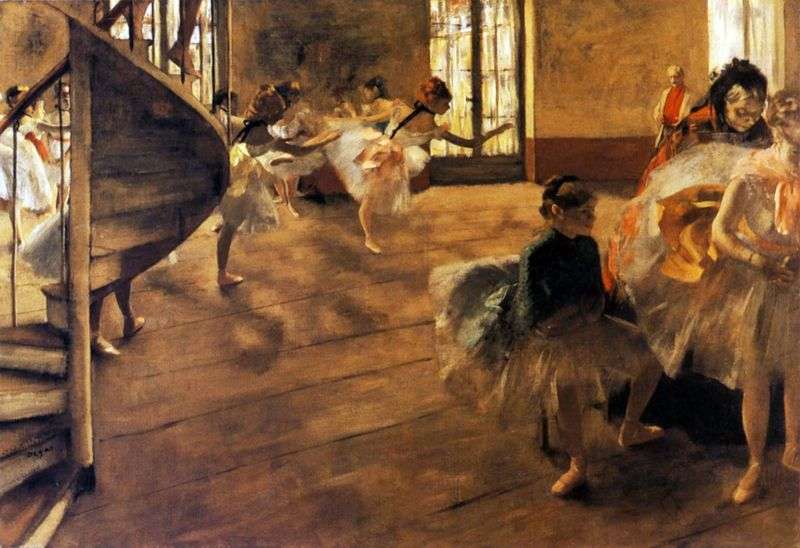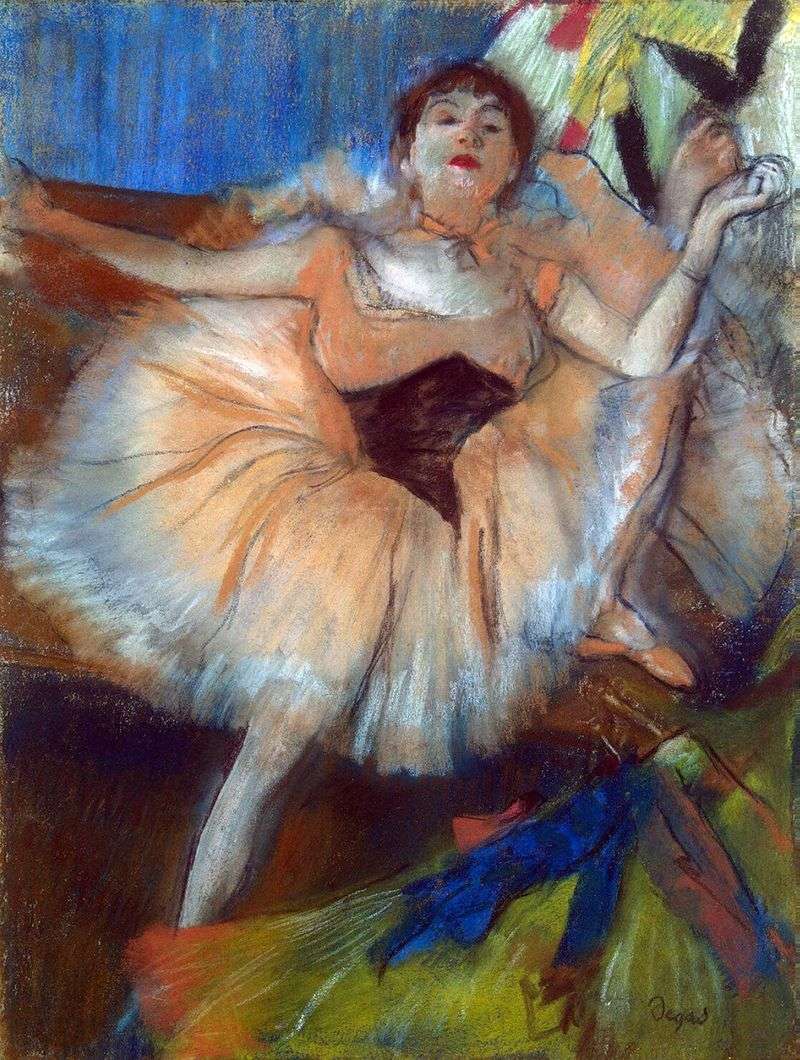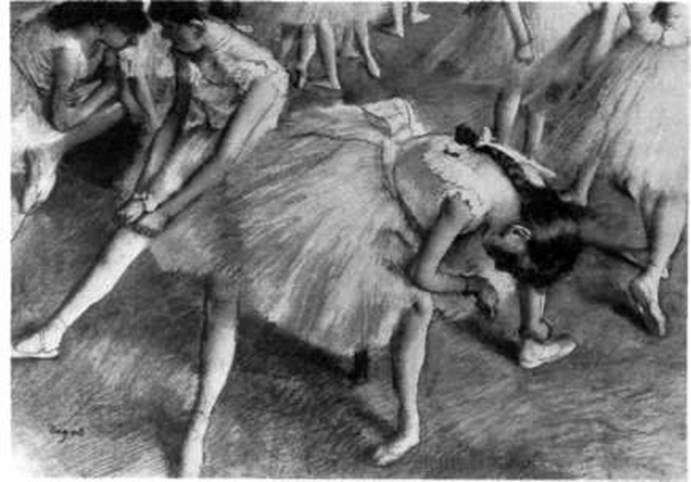
In the second half of the 1890s, Degas worked extensively on depicting dancers before going on stage. Usually at this moment they correct something: a strap, an earring. hairstyle, – a gesture in which the artist accurately recorded the “pre-start” excitement. Life behind the scenes, any fleeting episode in the wings already attracted Degas more than the shine of the scene.
In the later years, such motives as the prima’s speech completely lost all attraction for him. He portrays a ballerinas more than ever, but his subjects do not contain anything deliberately spectacular, as happened before, when Degas could write a bowing “star” with a bouquet of flowers or her arabesque. But the same unpretentious situations endlessly vary; dancers are going to “flop” on the stage, and this plot is even less significant than rehearsals; the very performance does not cause him to take up a brush or pastel crayons. One of the best compositions of the late 1890s, representing ballerinas behind the scenes, “Blue Dancers” with three figures.
Around the same time Degas worked on the big picture “Four Dancers”. Both compositions have a lot of variations. In this case, we should mention a pastel with four figures, like “Dancers”, where it appears in exactly the same foreshortening as in “Two Dancers”, a ballet dancer adjusting her hair. Variations have different purposes.
It changes not only the number of figures, but also the technique, color, and drawing. Each time there are new lines of force in the composition. Degas’ art is noticeably formalized. The plot is needed only insofar as it allows you to play the next symphony of colors, and the colors themselves become more active, brighter. Degas often dealt with two characters. He was a pair of two dancers, one of which corrects the earring, and the other – the hair. The triviality of the motive, moreover, constantly interpreted, becomes the guarantee of absolute concentration in color and form. The movements of the characters do not repeat exactly. They vary, but each time obey the immutability of the composition structure. Construction of “Two Dancers” from coll. Krebs is both stable and dynamic.
The principle of the pyramid, the form endowed with the greatest stability, is used here very subtly. The pyramidal shape in the lower part is formed by the skirts of the dancers. In the upper part – another pyramid, the hand, raised or lowered, together with the head give its outline. Both parts are connected by an inverted pyramid. This pastel, which was unknown to Lemoine, was preceded, in all likelihood, by several closely related compositions. Lemoine took them to 1897. The first of them is more spacious. The figures are given in a generational way, the background is larger.
The last “Dancers, correcting the hair” is compositionally trimmed and solved in the same way as “Two dancers” from coll. Krebs, but mirrored in relation to it. “Two Dancers” – a thing, is stylistically close to the works of 1898-99 years, in particular, to the Hermitage pastel “Dancer”, which featured a woman with raised hand.. It is separately reproduced in “The Bust of the Dancer and the Etude of the Hand.” In the work on the pastel, Degas could use the photographs. In any case the right figure like “dancers from the corps de ballet”, the photograph stored in the Paris National Library. Negative was transferred there after the death of the artist by his brother René in the number of different materials belonging to Degas. There are reasons to assume that the picture was executed by Degas himself, who was fascinated with photography in those years.
 Blue dancers by Edgar Degas
Blue dancers by Edgar Degas Blue Dancers by Edgar Degas
Blue Dancers by Edgar Degas Four dancers by Edgar Degas
Four dancers by Edgar Degas Dance class (Dance lesson) by Edgar Degas
Dance class (Dance lesson) by Edgar Degas Rehearsal by Edgar Degas
Rehearsal by Edgar Degas Seated dancer by Edgar Degas
Seated dancer by Edgar Degas Star by Edgar Degas
Star by Edgar Degas In anticipation of entering the stage by Edgar Degas
In anticipation of entering the stage by Edgar Degas